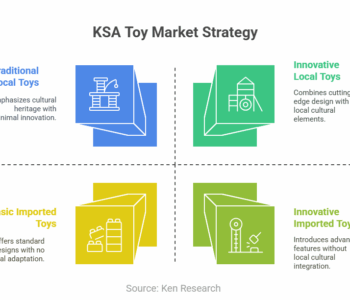 Business
Business
Surprising Ways General Surgery Billing Differs from Other Specialties
Understanding the Critical Distinctions That Impact Practice Revenue
Medical billing is the invisible engine behind a thriving healthcare practice. Yet, not all specialties are billed equally. If you’ve ever wondered why general surgeons often struggle with billing complexities more than dermatologists or pediatricians, you’re not alone. The nuances in documentation, procedural coding, and payer rules make General Surgery Billing vs. Other Specialties a crucial topic for healthcare professionals, administrators, and revenue cycle managers. This article dives deep into how general surgery billing stands apart, what makes it so challenging, and what you can do to improve accuracy and reimbursement rates.
Why Billing in General Surgery is More Complex Than It Seems
General surgery covers a wide scope of procedures—appendectomies, hernia repairs, colon surgeries, and more. This diversity introduces complexities not often seen in other specialties. Unlike internal medicine or psychiatry, where office visits dominate billing, general surgery procedures frequently involve pre-operative evaluations, intra-operative techniques, and post-operative care. Each phase has specific codes, modifiers, and documentation requirements. Missing any one detail can lead to denials, underpayments, or compliance risks.
The nature of general surgery also includes both elective and emergency procedures, often performed in different settings—ambulatory surgery centers, hospitals, or outpatient clinics. These variables affect not just coding but also billing strategies and payer requirements. Compare this with specialties like ophthalmology or orthopedics, where many procedures follow predictable paths and settings.
General Surgery Billing vs. Other Specialties: Key Differences
The differences between general surgery billing and other specialties stem from five key areas: coding variability, documentation intensity, modifier usage, global periods, and payer guidelines. For example, while a cardiologist may repeatedly use similar CPT codes for ECGs and stress tests, a general surgeon’s billing involves a mix of diagnostic, invasive, and therapeutic codes. The use of modifiers—like -59, -51, and -22—is also much more frequent in general surgery to distinguish bundled procedures or explain unusual service circumstances.
Where general surgery often requires coding from both the CPT and ICD-10-PCS manuals, other specialties like pediatrics may rely predominantly on standard CPT codes and Evaluation and Management (E/M) levels. The depth of knowledge needed to properly bill even a single general surgical procedure can be vast, especially when complications or revisions are involved.
Additionally, general surgery services are more likely to be bundled into global periods, making it essential to understand what can and cannot be billed separately. In contrast, specialties like psychiatry or dermatology typically work outside these constraints, simplifying the revenue cycle.
Documentation Is Everything—And More in Surgery
No matter the specialty, documentation is the backbone of billing, but in general surgery, its importance multiplies. Each surgical note must detail not just what was done, but why it was necessary, how it was performed, and whether any complications occurred. For instance, a cholecystectomy (gallbladder removal) performed laparoscopically may seem routine but requires different documentation and coding if converted to an open procedure due to complications.
This level of detail can influence whether a procedure is classified as inpatient or outpatient, which has significant implications for billing. Moreover, accurate documentation supports the use of modifiers that may justify additional reimbursement—something less frequently needed in general office-based specialties.
Comparatively, in fields like family medicine or neurology, the documentation often revolves around patient symptoms, diagnosis, and treatment plans, rather than complex surgical techniques. This makes the documentation process in other specialties more streamlined and less prone to billing disputes.
Modifier Use in General Surgery Billing Is Far More Frequent
Modifiers are essential in communicating the context of a procedure. In general surgery, the use of modifiers is not just common—it’s often mandatory. Whether it’s distinguishing between staged procedures (modifier -58), multiple procedures performed in one session (modifier -51), or services outside the global period (modifier -24), getting the modifier wrong can mean denied claims.
Other specialties might use a narrower set of modifiers, typically related to laterality or provider role. But general surgery often requires the combination of multiple modifiers to accurately depict the complexity of care. Failure to do so not only delays reimbursement but may also trigger payer audits.
This is especially important when billing complex surgical cases that span multiple anatomical regions or require return trips to the operating room. The precise use of modifiers helps justify separate payments for services that would otherwise be denied under global payment rules.
Global Surgical Package: A Billing Challenge Unique to Surgery
General surgery is deeply tied to the global surgical package concept. This includes pre-operative visits, the surgery itself, and routine post-operative care all within a single payment structure. Understanding the 0-, 10-, and 90-day global periods is crucial.
Other specialties might rarely interact with global periods, so their billing teams may not face the same hurdles. In general surgery, however, services performed within a global period must be carefully documented and coded to distinguish them from global coverage. For example, complications that require return visits or procedures within this period may need specific modifiers and justification to be reimbursed separately.
This level of scrutiny and regulation makes general surgery billing more administrative-heavy and less forgiving of errors.
Payer Rules Are More Stringent for Surgical Procedures
Payers, including Medicare and private insurers, impose stringent policies for surgical billing. Each insurer may have different requirements for prior authorization, bundling rules, or documentation audits. A procedure that is reimbursed with one insurer might be denied by another based on nuanced policy differences.
In contrast, specialties like pediatrics or psychiatry typically operate under more standardized rules, especially for common visit types. While all specialties face payer scrutiny, the variability and financial stakes are notably higher in general surgery.
Billing for assistant surgeons, anesthesia services, and surgical supplies further adds to the complexity. Keeping up with payer policy updates, including National and Local Coverage Determinations (NCDs and LCDs), becomes a full-time job in general surgery.
Coding Audits and Compliance Risks Are Higher
Because general surgery often involves high-revenue procedures, it’s more susceptible to coding audits and fraud investigations. Errors in documentation or coding, even if unintentional, can trigger penalties. The Office of Inspector General (OIG) routinely audits surgical practices for billing compliance, with general surgery often under the microscope.
Other specialties may not experience this level of regulatory focus. This places extra pressure on general surgery practices to maintain accurate records, train coding staff thoroughly, and invest in compliance monitoring systems.
Technology and Tools Can Bridge the Billing Gap
Given these complexities, many practices are turning to advanced general surgery medical billing services to handle the workload. Outsourcing to specialized billing companies can help ensure that codes are applied correctly, documentation is audit-proof, and claims are submitted faster. These services often use AI-assisted coding tools and real-time analytics to catch errors before claims go out, reducing denial rates and improving collections.
Compared to generalist billing solutions, these specialty-specific platforms are designed to handle the intricacies of surgical documentation, modifier use, and payer policy variations. For practices aiming to optimize their revenue cycle, partnering with such services may not just be helpful—it may be essential.
Staff Training Is Not Optional
One of the most actionable steps a general surgery practice can take is to invest in ongoing training for its billing and coding team. Because CPT and ICD-10 codes evolve yearly, and payer rules shift frequently, static knowledge quickly becomes outdated. Regular workshops, certifications, and updates on CMS guidelines can keep the team aligned with current best practices.
Other specialties might not require such intensive training because their code sets are smaller and more repetitive. But for general surgery, where the stakes and variations are high, continuous education is the cornerstone of billing success.
Conclusion: Adapt or Lose Revenue
General surgery billing is a high-stakes, high-complexity game that demands expertise, technology, and vigilance. When comparing General Surgery Billing vs. Other Specialties, it becomes clear that surgical billing involves more moving parts, more frequent audits, and higher documentation standards.
Practices that fail to adapt to these realities risk claim denials, compliance penalties, and revenue loss. On the flip side, those who invest in specialized tools, staff training, and robust general surgery medical billing services stand to gain not just accurate reimbursement, but long-term financial sustainability.
In a healthcare landscape where margins are tightening and regulatory scrutiny is intensifying, understanding these differences is no longer optional—it’s foundational.









